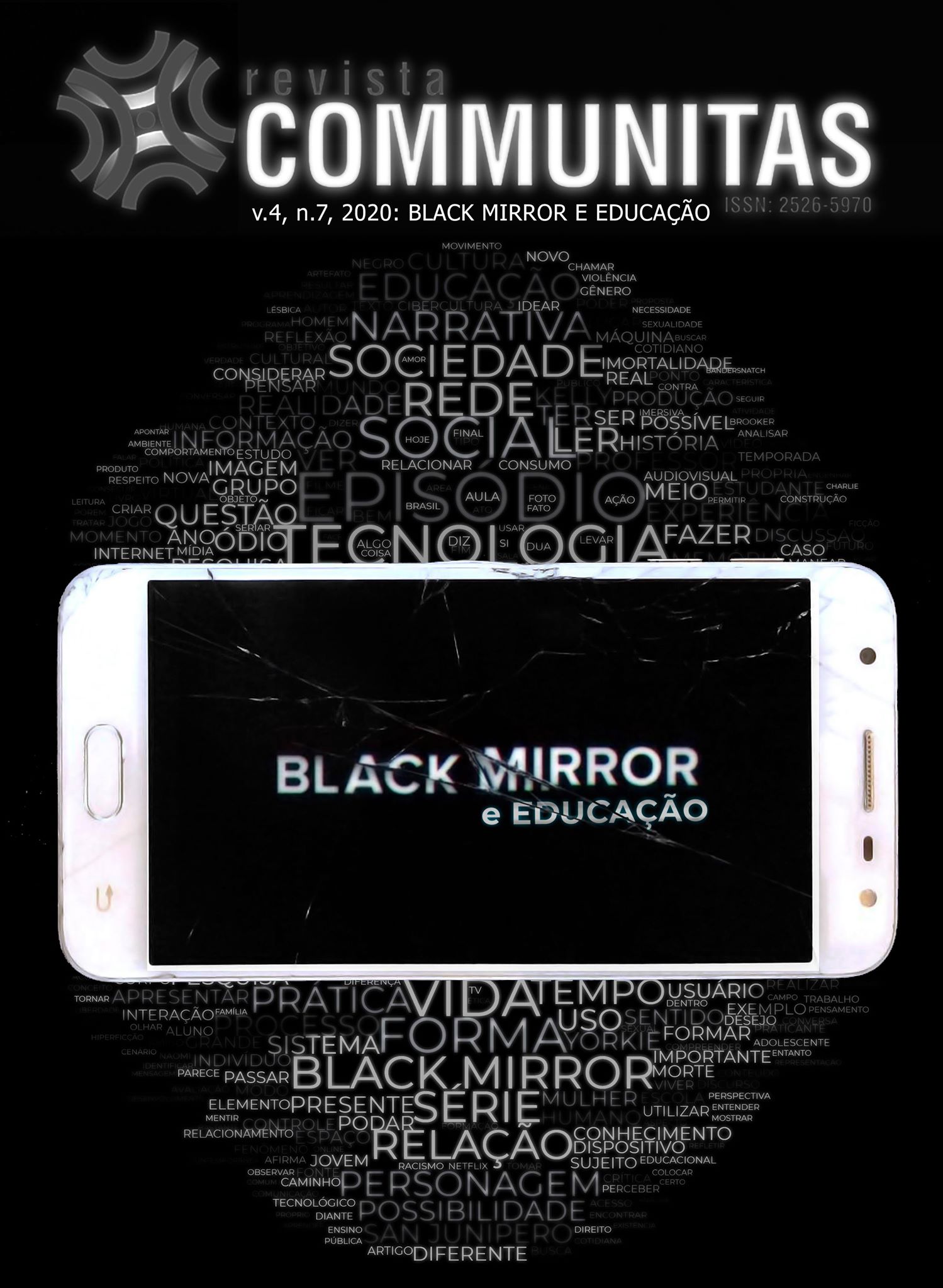O CONSUMO E A ANÁLISE MULTIRREFERENCIAL DA REPRESENTAÇÃO FEMININA EM NOSEDIVE (2011)
Keywords:
Sociedade da informação. Multirreferencialidade. Representatividade feminina. Consumo.Abstract
This article aims to discuss through the analysis of the Black Mirror’s episode Nosedive (2011), multireferentiality as potential in the realms of Education and Communication. We start from the assumption that audiovisual language as a possibility of integration between the different dimensions for the understanding of reality and critical-reflexive development, as well as the student's aesthetic judgment, allowing the subject to comprehend more broadly and under the plurality of directed glances for social issues such as stereotyping and objectification of the female figure in cinematographic media, in which the unreal naturalizes and ends up reproducing as the true visual representation of the real. In order to do so, we analyzed some theoretical aspects of the consumption, images, contexts and color palettes presented in the narrative, in the exercise of multireferentiality. As results of our investigation, we emphasize that the episode foments reflections about the vigilance and how it constitutes through the consumption.
Downloads
References
BAUDRILLARD, Jean. A sociedade de consumo. Lisboa: Edições 70, 1981.
BAUMAN, Zygmunt. O mal-estar da pós-modernidade. Rio de Janeiro: Zahar, 1998.
BAUMAN, Zygmunt. A sociedade individualizada: vidas contadas e histórias vividas. [E-book]. Rio de Janeiro: Zahar, 2008.
BAUMAN, Zygmunt. Vida para consumo: a transformação das pessoas em mercadoria. Rio de Janeiro: Zahar, 2008b.
BAUMAN, Zygmunt. Cegueira moral: a perda da sensibilidade na Modernidade Líquida. [E-book]. Rio de Janeiro: Zahar, 2014.
BAUMAN, Zigmunt. Vigilância Líquida. [E-book]. Zahar: Rio de Janeiro, 2014b.
BOURDIEU, Pierre. A dominação masculina. 11° edição. Bertrand, Rio de Janeiro, Brasil, 2012.
CANEVACCI, Massimo. A cidade polifônica. SP: Studio Nobel, 1995.
FEATHERSTONE, Mike. Cultura de consumo e Pós - Modernismo. São Paulo: Studio Nobel,1993.
FAGUNDES, Norma Carapiá; BURNHAM, Teresinha Fróes. Transdisciplinaridade, multirreferencialidade e currículo. Revista entreideias: educação, cultura e sociedade, v. 6, n. 5, 2007.
GIL, Inês. A atmosfera fílmica como consciência. Caleidoscópio: Revista de Comunicação e Cultura, [S.l.], n. 2, july 2011. ISSN 1645-2585. Disponível em: <http://revistas.ulusofona.pt/index.php/caleidoscopio/article/view/2192>. Acesso em: 15 de julho de 2018.
GUBERNIKOFF, Giselle. Cinema, identidade e feminismo. São Paulo: Editora Pontocom, 2016.
HELLER, Eva. A psicologia das Cores: como as cores afetam a razão e emoção. 1º Edição. São Paulo: Gustavo Gilli, 2013.
JAMENSON, Frederic. Pós - Modernismo: a lógica cultural do capitalismo tardio. São Paulo: Ática,1996..
MACHADO, Arlindo. Máquina e Imaginário. SP:EDUSP, 1993.
MORIN, Edgar. As estrelas: mito e sedução no cinema. SP: José Olympio, 1989.
SANTAELLA, Lúcia. Cultura das mídias. SP: Experimento, 1996.
SANTAELLA, Lúcia. Linguagens líquidas na era da Mobilidade. SP: Paulus, 2007
SARLO, Beatriz. Cenas da vida pós-moderna. Rio de Janeiro: UFRJ, 1997.
XAVIER, Ismail. O discurso cinematográfico: a opacidade e a transparência. São Paulo: Paz e Terra, 2005.
Downloads
Published
How to Cite
Issue
Section
License
The Copyright for articles published in this magazine belongs to the author, preserving the rights of first publication for the Communitas Magazine. Because they appear in this publicly accessible journal, the articles are free to use, with their own attributions, in educational and non-commercial applications.
























